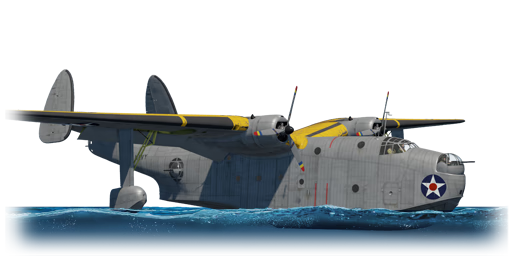



Glenn L. Martin Company was one of the few companies in America that was heavily into designing and producing seaplanes. One of the many seaplanes they built was the twin-engine PBM Mariner intended to be the successor of the P3M. The PBM-1 would feature two Wright R-2600-6 engines each producing 1,600 hp as well as a gull wing type design and twin tail. They entered service in 1940 and were utilized in regular patrols as well as anti-submarine warfare. Ten U-boats were sunk by PBM Mariners including U-158 which was sunk near the Bermudas. Mariners in American service were used until the last squadron (VP-50) retired the aircraft in 1956.
Introduced in Update "Hot Tracks", the PBM-1 "Mariner" is a very well-defended bomber capable of carrying heavy bomb loads. Unfortunately, the larger bomb loads come at the price of being very big and heavy compared to other bombers around its BR. Luckily, the PBM-1 has 5 turrets all housing 12.7 mm machine guns which is excellent for its BR. None of the turrets cover the bottom of the aircraft so players need to take evasive action against aircraft climbing up to attack. The PBM-1 "Mariner" is a strong bomber thanks to its excellent bomb load and strong defensive armament.
flaps
flaps
flaps
brake
| Belt | Belt filling | Armor penetration (mm) at a distance: | |||||
|---|---|---|---|---|---|---|---|
| 10 m | 100 m | 500 m | 1000 m | 1500 m | 2000 m | ||
| T/AP/I/AP-I | 30 | 27 | 20 | 13 | 9 | 6 | |
| AP/AP/AP/T | 30 | 27 | 20 | 13 | 9 | 6 | |
| AP-I/AP-I/AP-I/T | 28 | 26 | 18 | 11 | 7 | 4 | |
4 × 500 lb AN-M64A1 bomb












Flight performance | |
|---|---|
Weaponry | ||
|---|---|---|